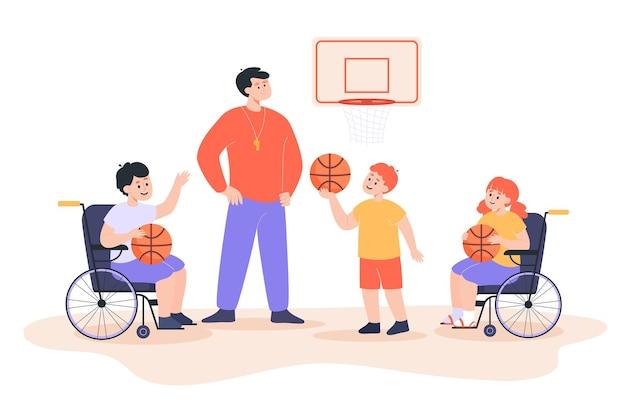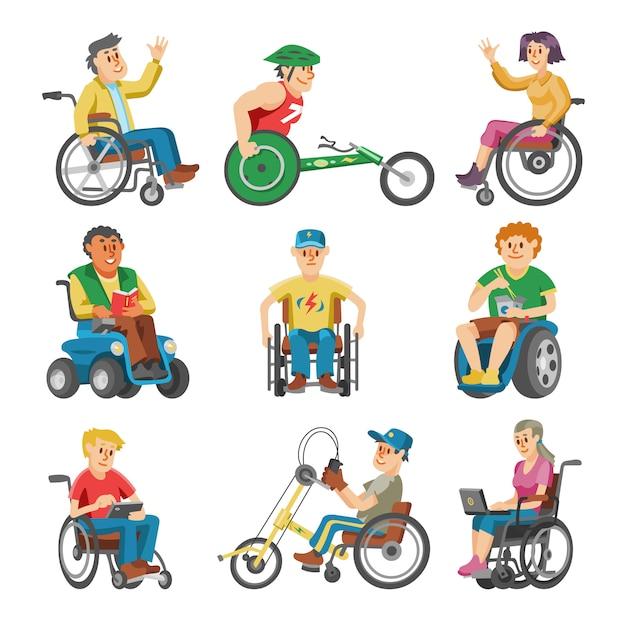Have you ever wondered about the difference between physical disability and mental disability? In today’s world, where conversations around disabilities are becoming more prevalent, it’s essential to gain a clear understanding of these terms and their implications. Both physical and mental disabilities can significantly impact an individual’s daily life and functioning, albeit in distinct ways.
In this blog post, we will delve into the disparities between physical and mental disabilities, exploring their definitions, effects, and how they are perceived in society. We will also touch upon intriguing topics like the positive and negative effects of new technology, the link between physical and mental health, and the influence of technology and media on our overall well-being. Join us in this enlightening journey as we aim to broaden our knowledge and foster a more inclusive society.
So, let’s get started by unraveling the unique characteristics of physical and mental disabilities. Are you ready to dive in? Let’s go!

What is the Difference Between Physical Disability and Mental Disability?
It’s a common misconception that physical disabilities and mental disabilities are one and the same. While both can affect a person’s daily life, they are distinct in nature and require different approaches to understanding and support. So, let’s dive deeper into understanding the quirks and nuances that set them apart.
The Physical Frontline: Physical Disabilities
Physical disabilities manifest primarily in the physical realm, impacting a person’s mobility, motor skills, or physical functions. These disabilities can include conditions like paralysis, amputations, muscular dystrophy, or cerebral palsy. While physical disabilities are visible to the naked eye, they vary greatly in terms of severity and functionality.
Living with a physical disability often demands practical adaptations to perform everyday tasks we might take for granted, such as walking, dressing, or eating. Sometimes, assistive devices like wheelchairs or prosthetic limbs come to the rescue, offering independence and mobility.
The Mental Maze: Mental Disabilities
Unlike physical disabilities, mental disabilities affect a person’s cognition, emotions, or mental health. These conditions can include intellectual disabilities, autism spectrum disorders, schizophrenia, or bipolar disorder. What makes mental disabilities unique is that they aren’t immediately visible to the untrained eye, making them sometimes harder to comprehend or empathize with.
Living with a mental disability means navigating the intricacies of the mind. It can manifest as challenges in learning, social interactions, emotional regulation, or decision-making processes. However, it’s important to remember that mental disabilities don’t equate to a lack of intelligence or potential. With the right support and accommodations, individuals with mental disabilities can still lead fulfilling lives.
The Battle Plan: How We Approach Disabilities
While the differences between physical and mental disabilities are evident, it’s crucial to recognize that these divisions are not set in stone. Many individuals may face a combination of physical and mental disabilities, blurring the lines between categorizations and requiring a holistic approach to understanding their needs.
In terms of support, physical disabilities often require modifications to the physical environment, such as accessible ramps or ergonomic tools. On the other hand, mental disabilities may require accommodations like tailored educational plans, therapy, or medication to foster mental well-being.
The Power of Perspective
Now that we’ve explored the contrasts between physical and mental disabilities, it’s essential to approach these differences with empathy, compassion, and an open mind. Remember, disability is just one aspect of a person’s life, and it doesn’t define their worth or potential.
By acknowledging the unique challenges and strengths individuals with disabilities possess, we can advocate for a society that embraces inclusivity, accessibility, and equal opportunities. So, let’s work together to build a world where everyone can thrive, regardless of their abilities.
References:
- CDC – Physical Disabilities
- WHO – Mental Health

FAQ: Physical Disability vs Mental Disability
What is the difference between physical disability and mental disability
Physical disability and mental disability are two distinct yet interconnected forms of impairment that can affect an individual’s daily functioning. Let’s delve into the differences between the two:
Are mental illnesses considered physical disabilities
While mental illnesses and physical disabilities are both forms of impairment, they differ in nature. Physical disabilities primarily affect the body’s physical functions, such as mobility or sensory perception. In contrast, mental disabilities primarily impact cognition, emotions, and behavior.
So, what are examples of physical disabilities
Physical disabilities cover a wide range of conditions. Some examples include mobility impairments like paralysis, amputation, or muscular dystrophy. Sensory disabilities, such as blindness or deafness, also fall under physical disabilities.
And how about mental disabilities such as mental illness
Mental disabilities encompass various mental health conditions. These can include mood disorders like depression and bipolar disorder, anxiety disorders, personality disorders, and schizophrenia, among others. These conditions often affect a person’s thoughts, emotions, and behavior.
How does physical health influence mental health
It’s no secret that our physical and mental health are intertwined. When we prioritize our physical well-being through regular exercise, healthy eating, and sufficient sleep, it positively impacts our mental health too. Exercise releases endorphins, the “feel-good” hormones, which can enhance mood and reduce stress.
Are technology and media affecting our physical and mental health
Ah, technology and media – the double-edged sword of the modern era! While they bring convenience and connection, excessive and inappropriate use can impact physical and mental health. Prolonged screen time may lead to sedentary lifestyles and poor posture, causing physical discomfort. Additionally, constant exposure to unrealistic media standards can harm mental health, leading to body image issues and self-esteem concerns.
What do new technologies do to our brains
Our brains are fascinating and adaptable, but they can also be influenced by technology. Excessive screen time may impact attention span, cognitive functioning, and sleep patterns. However, it’s not all doom and gloom! Engaging in activities that stimulate the mind and disconnecting from screens can help maintain and enhance brain health.
How do media affect our mental well-being
Media plays a significant role in shaping our perception of the world and ourselves. Social media, for instance, can impact mental health by fostering comparison, cyberbullying, and feelings of inadequacy. On the other hand, media platforms may also provide spaces for support, education, and connection, empowering individuals and promoting positive mental health.
How can we maintain physical and mental health
Ah, the million-dollar question! Maintaining physical and mental health requires a holistic approach. Here are some tips to get you started:
Exercise Regularly
Find physical activities that you enjoy, whether it’s dancing, jogging, or walking the dog. Get those endorphins flowing!
Nourish Your Body
Remember, you are what you eat. Fuel your body with a balanced diet rich in fruits, vegetables, lean proteins, and whole grains. Treat yourself occasionally – life’s too short to skip dessert!
Prioritize Sleep
Getting proper rest is crucial for your brain and body. Establish a relaxing bedtime routine and create a sleep-friendly environment.
Practice Mindfulness
Take time to slow down and focus on the present moment. Mindfulness techniques like meditation, deep breathing, or yoga can help reduce stress and promote mental clarity.
Seek Support
When life gets overwhelming, don’t hesitate to reach out. Friends, family, or a therapist can provide valuable support and guidance on your journey to wellness.
May you embark on a path of physical and mental well-being, embracing the uniqueness of both your physical and mental abilities with a dash of humor and a zest for life!
